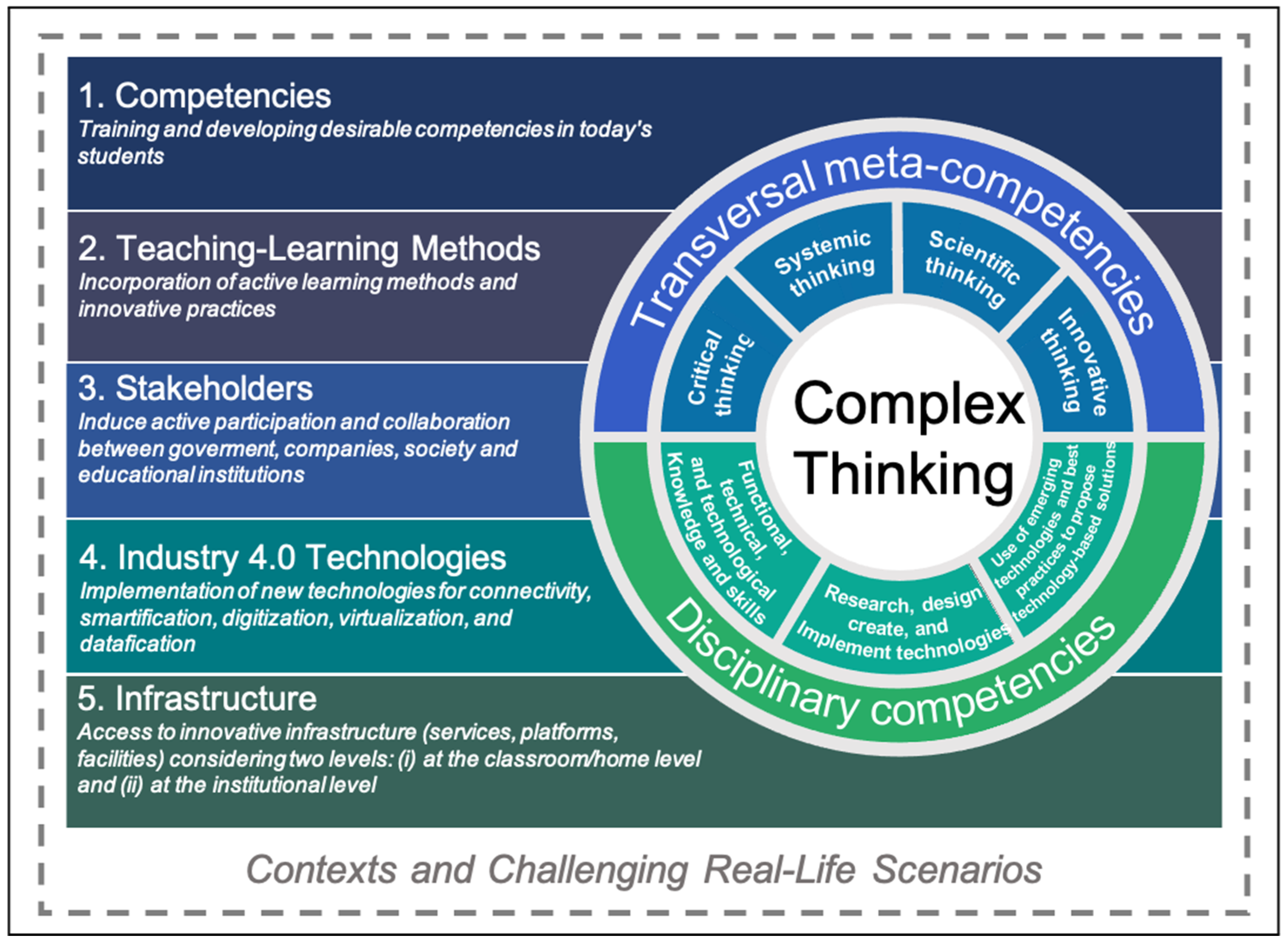Complex Thinking in the Framework of Education 4.0 and Open Innovation—A Systematic Literature Review
Abstract
:1. Introduction
1.1. Reasoning for Complexity and Research
1.2. Framework of Education 4.0
- Competencies. Training and developing desirable transversal and disciplinary competencies in today’s students.
- Teaching-Learning Methods. Incorporating new active learning methods and modalities (face-to-face learning, hybrid learning, and distance learning).
- Stakeholders. Inducing active participation and collaboration among key stakeholders, applying open-strategy methods, and triple and quadruple helix models.
- Technologies 4.0. Using current and emerging ICT for connectivity, virtualization, digitalization, datafication, and “smartification.”
- Infrastructure. Accessing innovative infrastructure (services, platforms, facilities) at the institutional, classroom, and home levels.
2. Materials and Methods
2.1. Research Questions
2.2. Search Process
2.3. Inclusion and Exclusion Criteria
2.4. Data Selection and Extraction Process
2.5. Data Synthesis
3. Results
- RQ1.
- How are the keywords of the studies related?
- RQ2.
- In which years were the articles published, and in which journals and quartile levels?
- RQ3.
- In which journals have the most cited articles been published?
- RQ4.
- What methods have been used in the articles? And RQ5: What kind of thinking is reflected in the studies?
- RQ6.
- Which Education 4.0 component is predominant in the articles? And RQ7: What are the educational research challenges identified in the studies?
4. Discussion: Complexity, Education 4.0, and Open Innovation
4.1. Education 4.0 and Complex Thinking
4.2. Complex Thinking by Education and Open Innovation
5. Conclusions
Author Contributions
Funding
Institutional Review Board Statement
Informed Consent Statement
Data Availability Statement
Acknowledgments
Conflicts of Interest
References
- Morin, E. From the concept of system to the paradigm of complexity. J. Soc. Evol. Syst. 1992, 15, 371–385. [Google Scholar] [CrossRef]
- Morin, E. Restricted complexity, general complexity. In Science and Us: Philosophy and Complexity. Singapore: World Scientific; 2007; pp. 1–25. Available online: http://www.cogprints.org/5217/1/Morin.pdf (accessed on 15 October 2021).
- Morin, E. La epistemología de la complejidad. Gaz. Antropol. 2004, 20, 2. Available online: http://hdl.handle.net/10481/7253 (accessed on 25 October 2021). [CrossRef]
- Mo, J.; Beckett, R.C. Transdisciplinary System of Systems Development in the Trend to X4. 0. In Transdisciplinary Engineering for Complex Socio-Technical Systems–Real-life Applications; IOS Press: Amsterdam, The Netherlands, 2020; pp. 3–12. [Google Scholar]
- Miranda, J.; Navarrete, C.; Noguez, J.; Molina-Espinosa, J.-M.; Ramírez-Montoya, M.-S.; Navarro-Tuch, S.A.; Bustamante-Bello, M.-R.; Rosas-Fernández, J.-B.; Molina, A. The core components of education 4.0 in higher education: Three case studies in engineering education. Comput. Electr. Eng. 2021, 93, 107278. [Google Scholar] [CrossRef]
- Zadi, I.C.; Montanher, R.C.; Monteiro, A.M. Juego digital para aprender inglés como segunda lengua utilizando el pensamiento complejo. Rev. Científica Gen. José María Córdova 2021, 19, 243–262. [Google Scholar] [CrossRef]
- Scipione, L. Philosophy (and argumentation) for children: Some reflection for primary school. Child. Philos. 2020, 16, 1–25. [Google Scholar] [CrossRef]
- Deguara, J.; Nutbrown, C. Signs, symbols and schemas: Understanding meaning in a child’s drawings. Int. J. Early Years Educ. 2018, 26, 4–23. [Google Scholar] [CrossRef]
- Francisco, T.G.; González, J.R.; Morales, W.G. Pedagogía de la Pregunta en la Enseñanza-Aprendizaje del Derecho, como Innovación Metodológica para Desarrollar el Pensamiento Crítico-Complejo: Un Análisis de Caso. Rev. Pedagog. Univ. Didáctica Derecho 2019, 6, 37–58. [Google Scholar] [CrossRef]
- Landa, L.G. The systemic logic of return migration in Mexico and its implication for language policy. La lógica sistémica de la migración de retorno en México y su implicación para la política del lenguaje. Rev. Int. Linguist. Iberoam. 2018, 16, 149–160. [Google Scholar]
- Hays, J. Wicked Problem: Educating for Complexity and Wisdom. In Wise Management in Organisational Complexity; Palgrave Macmillan: London, UK, 2013; pp. 134–150. [Google Scholar]
- Jörg, T.; Davis, B.; Nickmans, G. Towards a new, complexity science of learning and education. Educ. Res. Rev. 2007, 2, 145–156. [Google Scholar] [CrossRef]
- Tecnológico de Monterrey. Razonamiento para la complejidad. In Competencias Transversales. Una Visión Desde el Modelo Educativo TEC21. Documento Guía Para el Docente de Educación Superior; Tecnologico de Monterrey: Monterrey, México, 2019; pp. 62–76. [Google Scholar]
- Ramírez-Montoya, M.S.; Álvarez-Icaza, I.; Sanabria-Zepeda, J.C.; Gómez-Zermeño, M.G.; Alemán, L.; López-Caudana, E.O.; Alonso, I.; Miranda, J. Scaling Complex Thinking for Everyone through Open Science: A Conceptual and Methodological Framework. In Proceedings of the 9th International Conference on Technological Ecosystems for Enhancing Multiculturality (TEEM 2021), Barcelona, Spain, 27–29 October 2021. [Google Scholar]
- Sellars, M.; Fakirmohammad, R.; Bui, L.; Fishetti, J.; Niyozov, S.; Reynolds, R.; Thapliyal, N.; Liu-Smith, Y.-L.; Ali, N. Conversations on Critical Thinking: Can Critical Thinking Find Its Way Forward as the Skill Set and Mindset of the Century? Educ. Sci. 2018, 8, 205. [Google Scholar] [CrossRef] [Green Version]
- Talanquer, V.; Bucat, R.; Tasker, R.; Mahaffy, P.G. Lessons from a Pandemic: Educating for Complexity, Change, Uncertainty, Vulnerability, and Resilience. J. Chem. Educ. 2020, 97, 2696–2700. [Google Scholar] [CrossRef]
- Passig, D.; Cohen, L. Measuring the style of innovative thinking among engineering students. Res. Sci. Technol. Educ. 2013, 32, 56–77. [Google Scholar] [CrossRef]
- Suryansyah, S.A.; Kastolani, W.; Somantri, L. Scientific thinking skills in solving global warming problems. IOP Conf. Ser. Earth Environ. Sci. 2021, 683, 012025. [Google Scholar] [CrossRef]
- Conrad, C.; Serlin, R. The SAGE Handbook for Research in Education: Pursuing Ideas as the Keystone of Exemplary Inquiry. In The SAGE Handbook for Research in Education: Pursuing Ideas as the Keystone of Exemplary Inquiry; SAGE Publications, Inc.: Thousand Oaks, CA, USA, 2011. [Google Scholar] [CrossRef]
- Castillo-Martínez, I.M.; Ramírez-Montoya, M.S. Research Competencies to Develop Academic Reading and Writing: A Systematic Literature Review. Front. Educ. 2021, 5, 576961. [Google Scholar] [CrossRef]
- Sun, L. Sustainable design: Integrate the creative thinking and innovation into graphical communications. Eng. Des. Graph. J. 2018, 82, 13–28. [Google Scholar]
- White, H.A.; Shah, P. Scope of Semantic Activation and Innovative Thinking in College Students with ADHD. Creat. Res. J. 2016, 28, 275–282. [Google Scholar] [CrossRef]
- Lasi, H.; Fettke, P.; Kemper, H.G.; Feld, T.; Hoffmann, M. Industry 4.0. Bus. Inf. Syst. Eng. 2014, 6, 239–242. [Google Scholar] [CrossRef]
- Brozzi, R.; Forti, D.; Rauch, E.; Matt, D.T. The Advantages of Industry 4.0 Applications for Sustainability: Results from a Sample of Manufacturing Companies. Sustainability 2020, 12, 3647. [Google Scholar] [CrossRef]
- Mourtzis, D.; Vlachou, E.; Dimitrakopoulos, G.; Zogopoulos, V. Cyber-Physical Systems and Education 4.0 –The Teaching Factory 4.0 Concept. Procedia Manuf. 2018, 23, 129–134. [Google Scholar] [CrossRef]
- Miranda, J.; Rosas-Fernandez, J.B.; Molina, A. Achieving Innovation and Entrepreneurship by Applying Education 4.0 and Open Innovation. In Proceedings of the 2020 IEEE International Conference on Engineering, Technology and Innovation (ICE/ITMC), New York, NY, USA, 15–17 June 2020; pp. 1–6. [Google Scholar]
- Tang, S.; Long, M.; Tong, F.; Wang, Z.; Zhang, H.; Sutton-Jones, K.L. A Comparative Study of Problem-Based Learning and Traditional Approaches in College English Classrooms: Analyzing Pedagogical Behaviors Via Classroom Observation. Behav. Sci. 2020, 10, 105. [Google Scholar] [CrossRef]
- Kitchenham, B.; Charters, S. Guidelines for Performing Systematic Literature Reviews in Software Engineering; 2007; Available online: https://www.bibsonomy.org/bibtex/aed0229656ada843d3e3f24e5e5c9eb9 (accessed on 27 October 2021).
- University of York. (Ed.) Systematic Review; CRD, University of York: York, UK, 2009; Available online: https://bit.ly/2zJzE0E (accessed on 29 October 2021).
- Verner, J.; Brereton, O.; Kitchenham, B.; Turner, M.; Niazi, M. Systematic literature reviews in global software development: A tertiary study. In Proceedings of the 16th International Conference on Evaluation & Assessment in Software Engineering (EASE 2012), Ciudad Real, Spain, 14–15 May 2012. [Google Scholar]
- Moher, D.; Liberati, A.; Tetzlaff, J.; Altman, D.G.; PRISMA Group. Preferred reporting items for systematic reviews and meta-analyses: The PRISMA statement. BMJ 2009, 339, b2535. [Google Scholar] [CrossRef] [Green Version]
- Bauer, M.W.; Gaskell, G. (Eds.) Qualitative Researching with Text, Image and Sound: A Practical Handbook for Social Research; SAGE Publications Ltd.: Thousand Oaks, CA, USA, 2020. [Google Scholar]
- Brewerton, P.M.; Millward, L.J. Organizational Research Methods; Sage: London, UK, 2001. [Google Scholar]
- Henderikx, M.A.; Kreijns, K.; Kalz, M. Refining success and dropout in massive open online courses based on the intention–behavior gap. Distance Educ. 2017, 38, 353–368. [Google Scholar] [CrossRef] [Green Version]
- Ramírez-Montoya, M.-S.; Lugo-Ocando, J. Systematic review of mixed methods in the framework of educational innovation. Comunicar 2020, 28, 9–20. [Google Scholar] [CrossRef]
- Weller, M.; Jordan, K.; Devries, I.; Rolfe, V. Mapping the open education landscape: Citation network analysis of historical open and distance education research. Open Prax. 2018, 10, 109–126. [Google Scholar] [CrossRef] [Green Version]
- Lee, M.; Yun, J.J.; Pyka, A.; Won, D.; Kodama, F.; Schiuma, G.; Park, H.; Jeon, J.; Park, K.; Jung, K.; et al. How to Respond to the Fourth Industrial Revolution, or the Second Information Technology Revolution? Dynamic New Combinations between Technology, Market, and Society through Open Innovation. J. Open Innov. Technol. Mark. Complex. 2018, 4, 21. [Google Scholar] [CrossRef] [Green Version]
- Yun, J.J.; Won, D.; Park, K. Dynamics from open innovation to evolutionary change. J. Open Innov. Technol. Mark. Complex. 2016, 2, 7. [Google Scholar] [CrossRef] [Green Version]
- Pichlak, M.; Szromek, A. Eco-Innovation, Sustainability and Business Model Innovation by Open Innovation Dynamics. J. Open Innov. Technol. Mark. Complex. 2021, 7, 149. [Google Scholar] [CrossRef]
- Chandler, N.; Krajcsák, Z. Intrapreneurial Fit and Misfit: Enterprising Behavior, Preferred Organizational and Open Innovation Culture. J. Open Innov. Technol. Mark. Complex. 2021, 7, 61. [Google Scholar] [CrossRef]
- Yun, J.J.; Liu, Z. Micro- and Macro-Dynamics of Open Innovation with a Quadruple-Helix Model. Sustainability 2019, 11, 3301. [Google Scholar] [CrossRef] [Green Version]
- Cano, J.A.; Londoño-Pineda, A. Scientific Literature Analysis on Sustainability with the Implication of Open Innovation. J. Open Innov. Technol. Mark. Complex. 2020, 6, 162. [Google Scholar] [CrossRef]
- Yun, J.J. How do we conquer the growth limits of capitalism? Schumpeterian Dynamics of Open Innovation. J. Open Innov. Technol. Mark. Complex. 2015, 1, 17. [Google Scholar] [CrossRef] [Green Version]
- Yun, J.J.; Won, D.; Park, K. Entrepreneurial cyclical dynamics of open innovation. J. Evol. Econ. 2018, 28, 1151–1174. [Google Scholar] [CrossRef]
- Saebi, T.; Foss, N.J. Business models for open innovation: Matching heterogeneous open innovation strategies with business model dimensions. Eur. Manag. J. 2015, 33, 201–213. [Google Scholar] [CrossRef] [Green Version]
- Tsutsui, Y.; Yamada, N.; Mitake, Y.; Sholihah, M.; Shimomura, Y. A Strategic Design Guideline for Open Business Models. Int. J. Autom. Technol. 2020, 14, 678–689. [Google Scholar] [CrossRef]
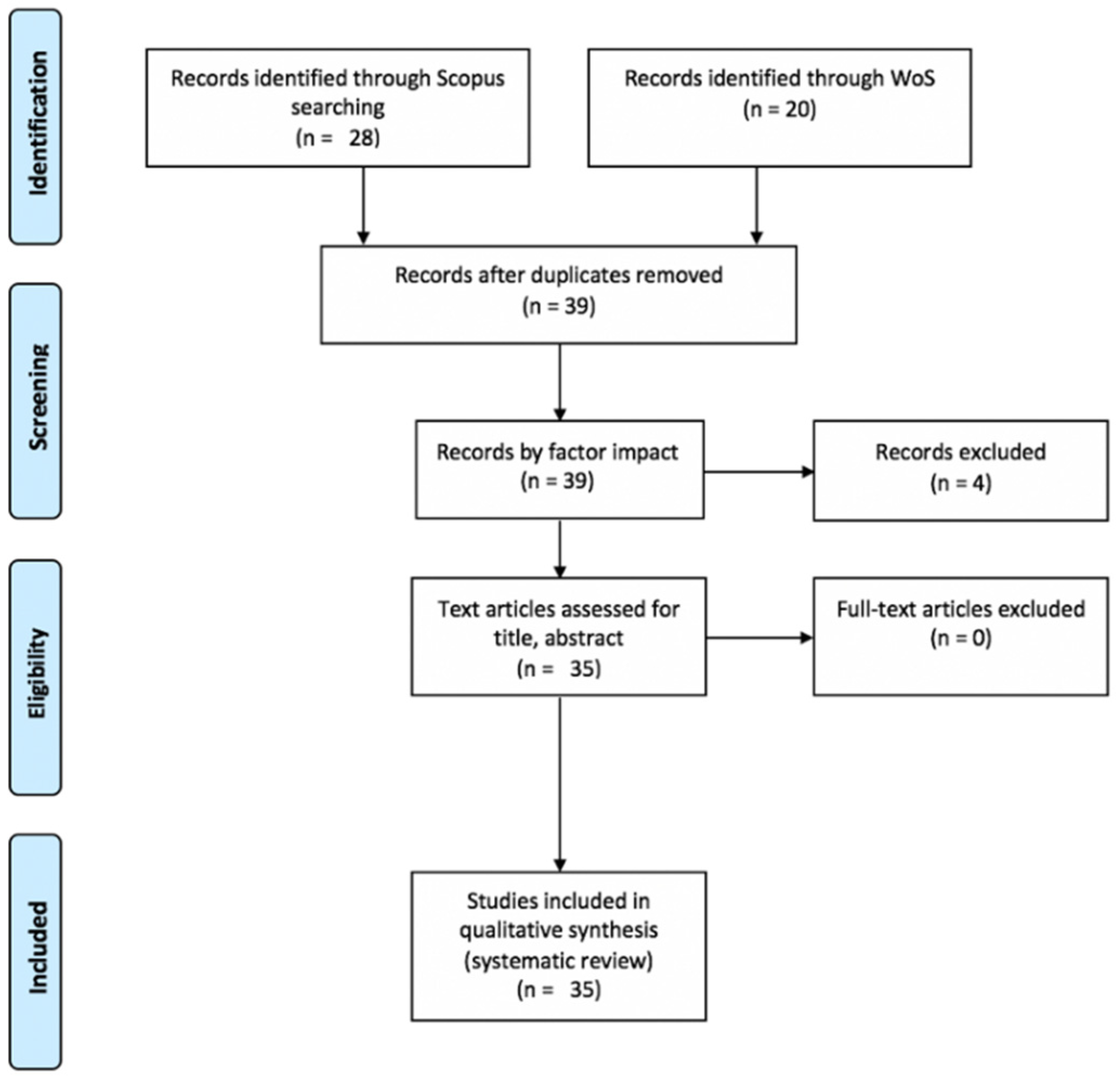
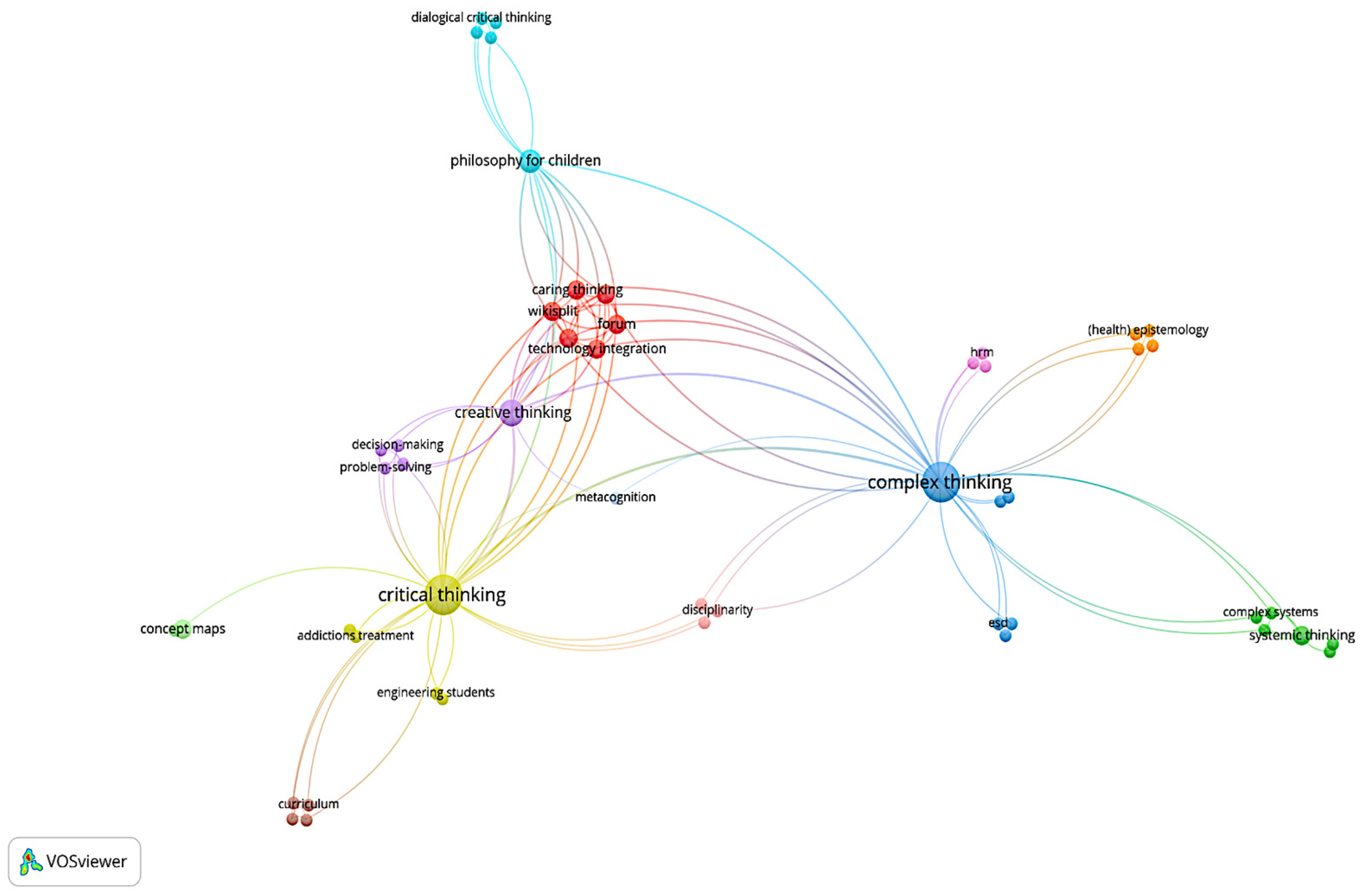
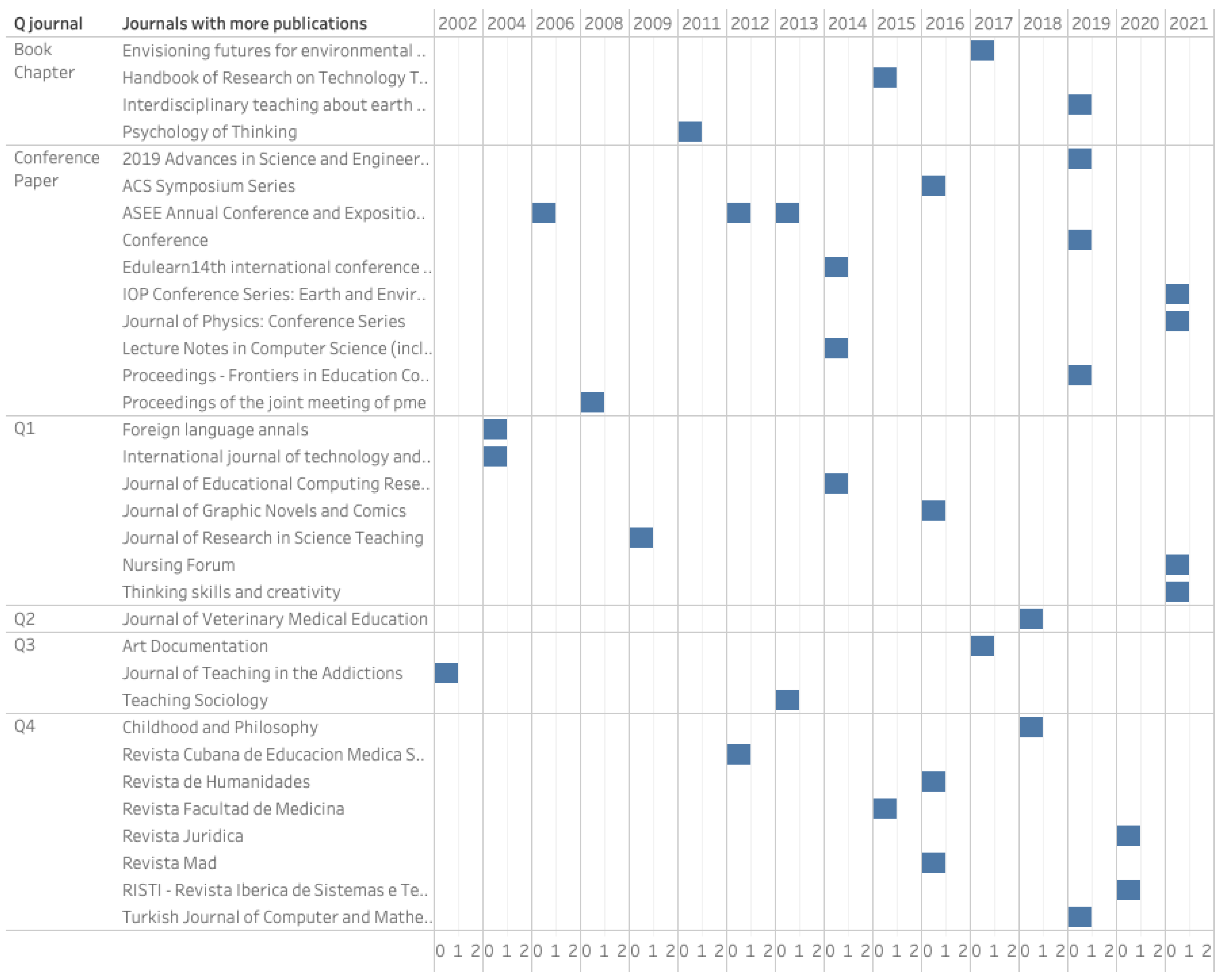

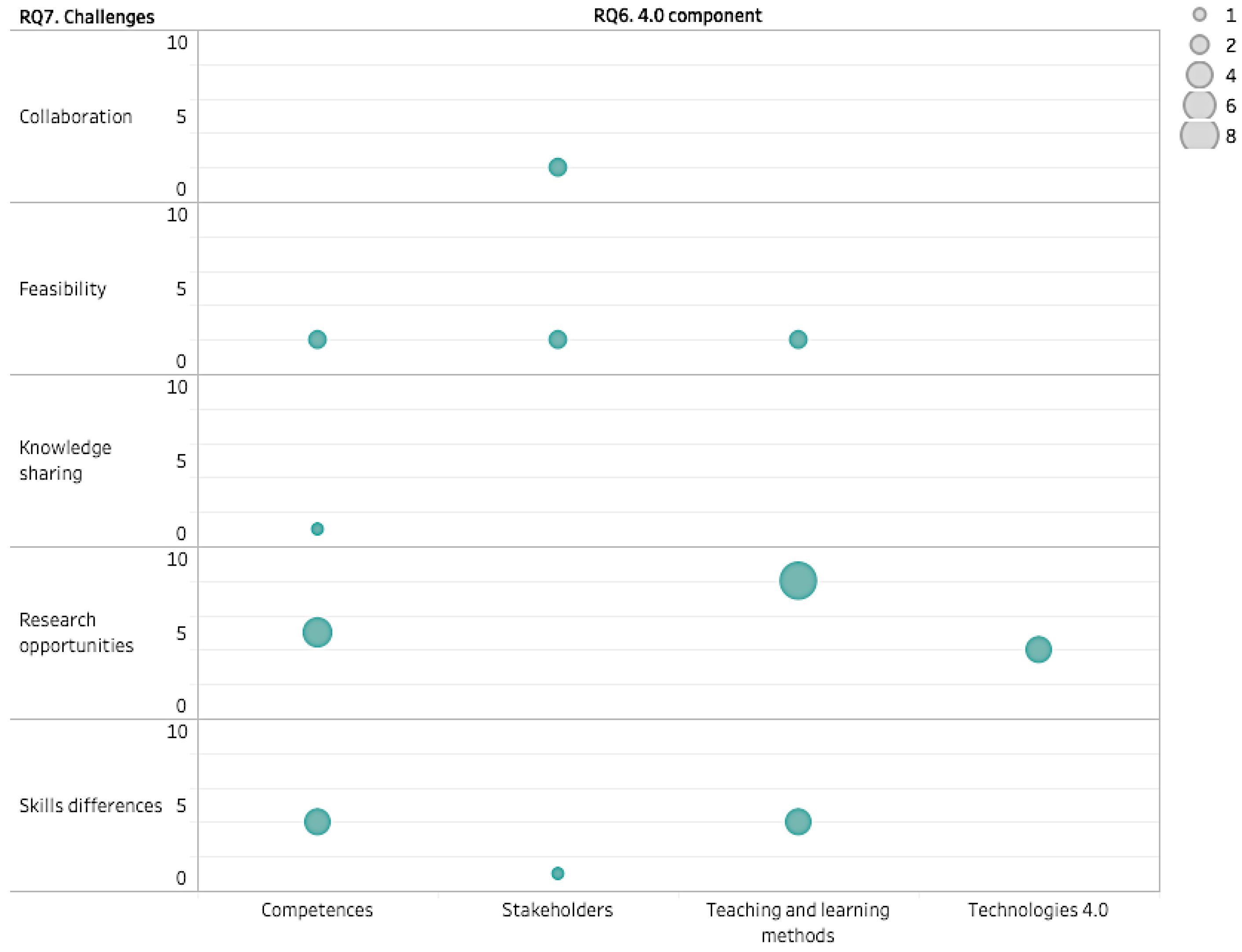
| Themes | Research Questions (RQ) | Possible Answers Based on Literature |
|---|---|---|
| General characteristics of complex thinking studies | RQ1. How are the keywords of the studies related? | Co-Terms Network |
| RQ2. In which years were the articles published, and in which journals and quartile levels? | Year of publication | |
| Q of the journal | ||
| RQ3. In which journals have the most cited articles been published? | Articles with more citations | |
| Journals with more publications | ||
| Methodological strategies | RQ4. What methods were used in the articles? | Methods [19]: Quantitative methods Qualitative methods Mixed methods |
| Types of reasoning for complexity | RQ5. What kind of complex thinking is reflected in the studies? | Kind of complex thinking [14] Systemic thinking Scientific thinking Critical thinking Innovative thinking |
| Complex thinking in Education 4.0 | RQ6. Which Education 4.0 component is predominant in the articles? | Education 4.0 components [26]: Competencies Teaching and learning methods Technologies 4.0 Infrastructure Stakeholders |
| Challenges for educational research | RQ7. What are the educational research challenges identified in the studies? | Research challenges [20]: Research opportunities Feasibility Knowledge sharing Collaboration Skills differences |
| Scopus | Web of Science (WoS) |
|---|---|
| TITLE-ABS-KEY (“complex thinking” AND (“critical thinking” OR “innovative thinking” OR “systemic thinking” OR “scientific thinking”)) AND (LIMIT-TO (DOCTYPE, “ar”) OR LIMIT-TO (DOCTYPE, “cp”) OR LIMIT-TO (DOCTYPE, “ch”) OR LIMIT-TO (DOCTYPE, “re”)) | TOPIC: (“complex thinking”) AND TOPIC: (“critical thinking” OR ”innovative thinking” OR ”systemic thinking” OR ”scientific thinking”) Timespan: All years. Indexes: SCI-EXPANDED, SSCI, A&HCI, CPCI-S, CPCI-SSH, BKCI-S, BKCI-SSH. |
| Journal Name | Q Journal | ID Articles | Citations |
|---|---|---|---|
| Journal of Research in Science Teaching | Q1 | 34 | 119 |
| Foreign Language Annals | Q1 | 14 | 58 |
| Journal of Educational Computing Research | Q1 | 30 | 25 |
| Teaching Sociology | Q3 | 10 | 9 |
| Revista Cubana de Educación Médica Superior | Q4 | 5 | 7 |
| Journal of Veterinary Medical Education | Q2 | 6 | 4 |
| Revista Facultad de Medicina | Q4 | 31 | 4 |
Publisher’s Note: MDPI stays neutral with regard to jurisdictional claims in published maps and institutional affiliations. |
© 2021 by the authors. Licensee MDPI, Basel, Switzerland. This article is an open access article distributed under the terms and conditions of the Creative Commons Attribution (CC BY) license (https://creativecommons.org/licenses/by/4.0/).
Share and Cite
Ramírez-Montoya, M.S.; Castillo-Martínez, I.M.; Sanabria-Z, J.; Miranda, J. Complex Thinking in the Framework of Education 4.0 and Open Innovation—A Systematic Literature Review. J. Open Innov. Technol. Mark. Complex. 2022, 8, 4. https://doi.org/10.3390/joitmc8010004
Ramírez-Montoya MS, Castillo-Martínez IM, Sanabria-Z J, Miranda J. Complex Thinking in the Framework of Education 4.0 and Open Innovation—A Systematic Literature Review. Journal of Open Innovation: Technology, Market, and Complexity. 2022; 8(1):4. https://doi.org/10.3390/joitmc8010004
Chicago/Turabian StyleRamírez-Montoya, María Soledad, Isolda Margarita Castillo-Martínez, Jorge Sanabria-Z, and Jhonattan Miranda. 2022. "Complex Thinking in the Framework of Education 4.0 and Open Innovation—A Systematic Literature Review" Journal of Open Innovation: Technology, Market, and Complexity 8, no. 1: 4. https://doi.org/10.3390/joitmc8010004
APA StyleRamírez-Montoya, M. S., Castillo-Martínez, I. M., Sanabria-Z, J., & Miranda, J. (2022). Complex Thinking in the Framework of Education 4.0 and Open Innovation—A Systematic Literature Review. Journal of Open Innovation: Technology, Market, and Complexity, 8(1), 4. https://doi.org/10.3390/joitmc8010004






